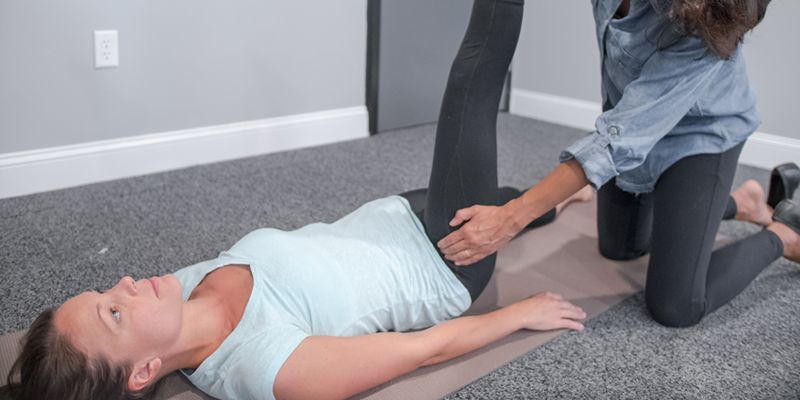What is the Psoas?
The iliopsoas, or the psoas, is one of the most important and largest muscles of the body at an average of 16 inches long. The psoas runs the length of the lower mid-spine and connects to all vertebral bodies down to the hip and pelvis, making it crucial to smooth movement and flexibility of the legs, hips, back, and pelvis. It also helps stabilize the body through daily functional movements like sitting and standing. It lies partially in the back of the abdominal cavity and the back of the pelvic cavity. Because of its unique location, the psoas can be responsible for a long list of health issues ranging from abnormal menstrual pains and bladder pain to everyday low back, hip, and knee pain. Psoas imbalances can cause musculoskeletal problems like pelvic tilt and uneven leg length and it can even be a contributor to more serious conditions like degeneration of the hip joints, pinched or herniated discs, and scoliosis (abnormal curvature of the spine). At Rebalance Physical Therapy, we very often see the psoas as a major contributor and source of back and hip pain in many cases.

Psoas Trigger Points
If you have experienced some of the above symptoms and have been given a similar diagnosis, you may be surprised to learn that trigger points in the psoas may be the true cause of the problem! Like the gluteus medius muscle, the psoas often contains latent trigger points that do not cause pain or discomfort until they are touched. Pain radiates from the psoas to other parts of the body due to the pain referral patterns of the trigger points. Therefore, many health care providers often overlook psoas trigger points as a possible source of orthopedic and pelvic floor pains. Trigger points in the psoas frequently cause chronic lower back pain in the lumbar spine, which supports the weight of the torso, and into the sacroiliac joints, which are located just beneath the lumbar spine. These trigger points can then refer pain down into the pelvis and legs. In daily functional movements, muscular imbalances in the psoas can cause pain with standing, walking, stair climbing, and sitting.
Relief From Psoas Pain
Although pain from psoas trigger points can be severe, it can be treated effectively with a knowledgeable physical therapist and a holistic comprehensive exam. In our examinations at Rebalance PT, we often find that the psoas is not the only factor in someone’s pain, but acts as a contributor to their overall symptoms. All impairments and muscular imbalances need to be identified to see if and how the psoas is involved and how to successfully treat it. A physical therapist at Rebalance will assess your full body to discover if your leg, back, or pelvic pain has been misdiagnosed and if psoas trigger points are the true sources of the problem. They will also identify lifestyle factors that may contribute to your pain, such as sleeping in the fetal position, sitting for prolonged periods with the trunk of the body and thighs too close to one another, performing sit-ups incorrectly, and suggest appropriate changes. You will also learn pain-relieving stretches and exercises to perform on your own based on your individual needs. A skilled physical therapist will take a hands-on, personalized approach to treating your pain through techniques like myofascial release, where the therapist applies gentle pressure to the affected muscle groups and connective tissue, and by applying ischemic pressure to reduce and eliminate the trigger points themselves. These manual techniques performed by physical therapists help bring the muscle from a shortened to a lengthened state.
Strengthening and lengthening the muscle is key in making sure that psoas trigger points cannot reactivate. If you are struggling with any of the symptoms described here, contact Rebalance Physical Therapy to pinpoint the source of your pain and seek a solution.
















